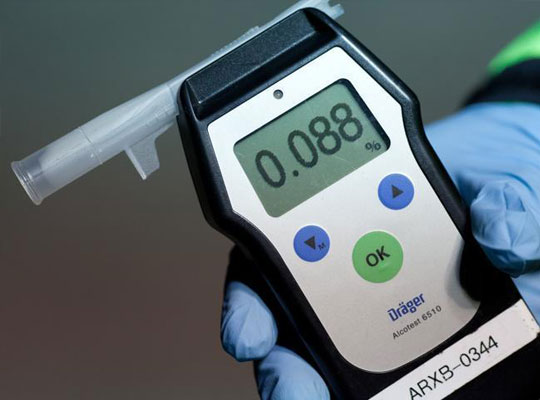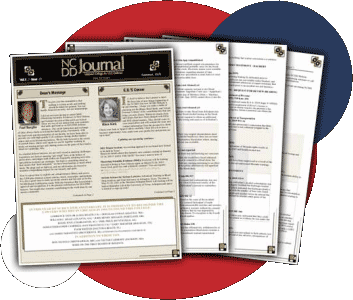Breath Testing

Breath analysis is bar far the most commonly used method of testing for blood alcohol levels. While not nearly as accurate or reliable as blood testing, breath testing has been generally recognized in the scientific community if administered correctly.
Unfortunately, breath testing as currently used, is not a particularly accurate method for truly measuring blood alcohol levels. Even with a perfectly functioning breath instrument, physiological variables make accurate breath measurement nearly impossible.
A number of scientists who have conducted studies of breath-alcohol measurements have concluded that the current breath testing method is inherently unreliable. At least one study concluded that breath test readings vary at least fifteen percent from true blood alcohol levels. Learn more here.
Due to some of the perceived unreliability, the National Safety Council Committee on Alcohol and Other Drugs recommends that all states college at least two separate samples for independent analysis. However, several states still only collect one sample.
There are numerous instruments deployed nationwide by law enforcement. Various versions of the Intoxilizer and BAC Data-Master are used by police departments nationwide. The Intoximeter EC/IR and Drager 7110 and 9510 use both infrared and fuel cell to analyze each sample. Click here to learn more about breath instruments used nationwide by law enforcement.
Each of these instruments operate on infrared spectroscopic analysis, a principle that alcohol vapor captured in a sample chamber will absorb light waves of a certain frequency when light is projected through the chamber. The more alcohol, present in the chamber, the more light that is absorbed. Fuel cells have also become increasingly acceptable methods of measurement.
In order to truly understand the deficiencies in breath testing, one must understand that no matter what instrument is employed the measurement produced will be based on various scientific “presumptions” about that individual. It is important to understand each of these:
1. Blood/Breath Partition Ratio
One of the most basic assumptions a breath instrument makes is that alcohol in water will always obey “Henry’s Law.” That is there is a predictable ratio in the amount of alcohol contained in a liquid (blood) and the vapor above it when heated to approximately 34 c (breath). That acceptable ratio is 2100:1. However there are numerous studies which suggests that this is scientifically inaccurate. Learn more.
2. Interferents in Breath Sample: Acetone and Acetaldehyde
Contrary to popular belief, breath instruments DO NOT test for alcohol. They instead test of any molecule having a carbon/hydrogen bond. That means that there are several substances, normally found on the human breath, which can be detected by breath instruments as alcohol. Learn more about the various studies which have shown the inherent problem with breath sample interferents.
3. Diabetes and Breath Testing.
If a person tested in diabetic there may be at least four separate effects on the accuracy of that breath analysis. First, any state of Ketoacidosis might have radical effects on the accuracy of the reading. Second, an abnormally high amount of ketones on the breath may exist in diabetic clients. This too can detrimentally effect test results. Third, a high amount of acetone on the breath is not uncommon in diabetics. Finally, low blood sugar, a major side effect for diabetics, can mimic intoxication in many ways. To learn more about diabetes and breath testing here.
4. Mouth Alcohol.
Perhaps the most prevalent cause of error in breath testing accuracy is mouth alcohol. This alcohol will contaminate and elevate the readings exponentially. Further, since the breath machine assumes its deep lung air, it then multiplies it by 2100. There are numbers of ways that mouth alcohol can enter the sample chamber and a number of ways that it will effect breath test readings. Learn more about mouth alcohol defense here.
5. Testing During the Absorptive Stage.
Full absorption of alcohol occurs anywhere from 45 – 120 minutes after a person has finished drinking. During this absorptive phase, the distribution of alcohol in the circulatory system is not in equilibrium. That is there is a difference in the alcohol concentration between the arteries and the veins. This can greatly effect breath alcohol readings. Learn more about testing during the absorptive phase here.
6. Hematocrit.
The variability in the composition of blood can actually effect breath testing. Whole blood is made up of a mixture of solids particles suspended in a liquid. The percentage of solid particles to liquid is known as the hematocrit. Since alcohol is water soluble, the higher concentration of liquid in a persons blood will effect the amount of alcohol present in the blood. To learn more about how hematocrit effect breath testing, visit our Virtual Forensic Library here.
7. Body Temperature.
The effects of changes in body temperature from the norm of 98.6 F can and will have radical effects on the accuracy of breath testing. As body temperature changes so too does the 2100:1 partition ratio (discussed above) change. However, a breath testing instrument will not adjust nor even measure breath temperature in most circumstances. To learn more about the effects of body temperature on breath testing, visit our Library here.
8. Breathing Patterns
The way a person breathes just before blowing into a breath instrument may actually effect the accuracy of the readings. Several studies suggest holding a person’s breath or hyperventilating prior to supplying a sample may greatly affect the accuracy of the readings. To learn more about the effects of breath patterns on breath testing, visit out Virtual Library right here.
9. Simulator Calibration.
The accuracy of any breath machine depends on the accuracy of its calibration. Obviously, if a machine is not properly calibrated, its results are not reliable. Calibration of breath instruments is done through the use of simulator solutions. The problem of in accurate calibration often occurs where the solution contains an alcohol concentration that is less than the specified concentration. There are many ways that simulator solutions can lead to faulty and improper calibrations. To learn more about the effect of faulty simulator solutions, visit our Virtual Library here.
There are many other ways that breath testing is susceptible to error and inaccuracies. To learn more about breath test defenses that work, visit our Virtual Forensic Library right here.




